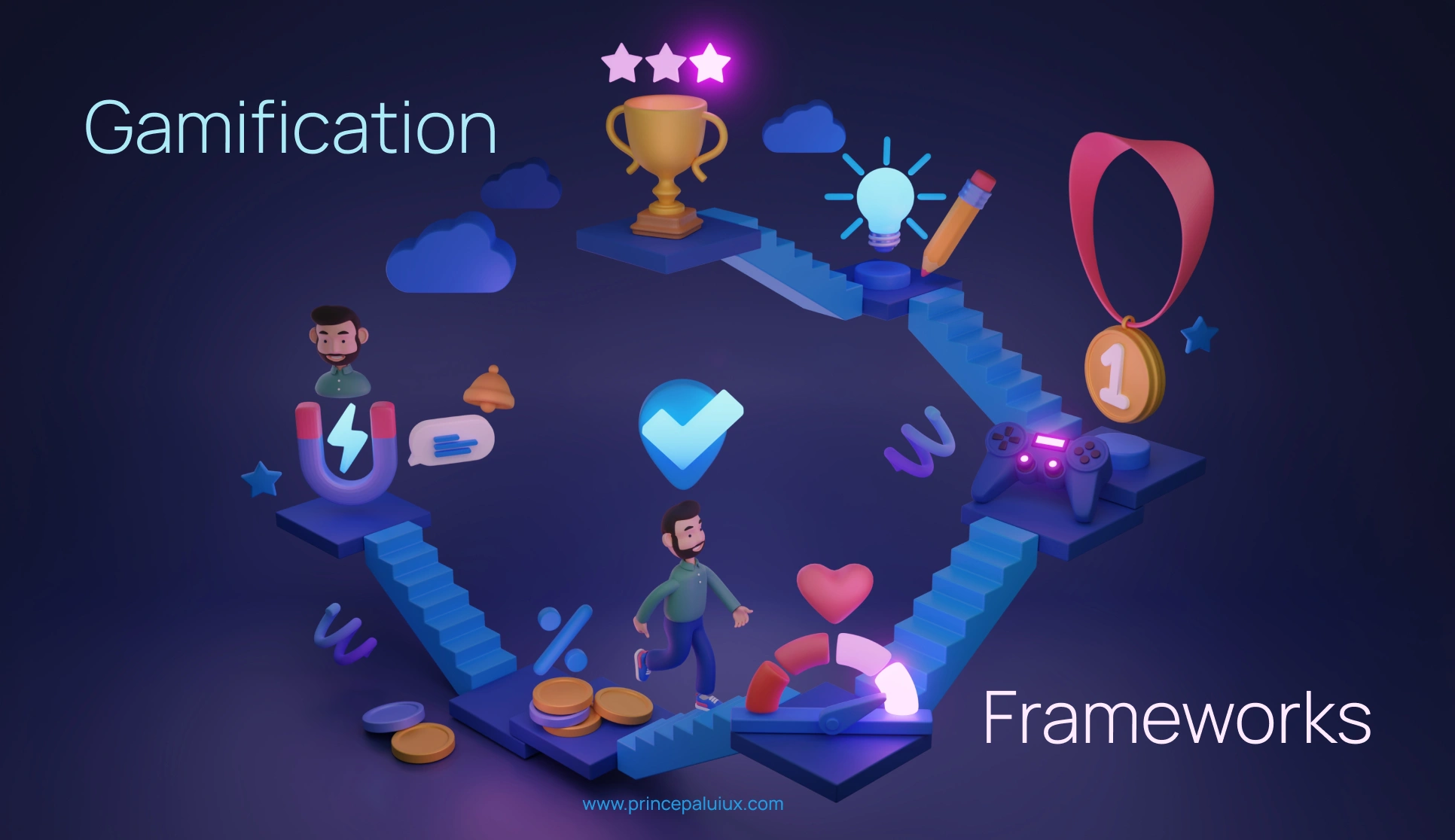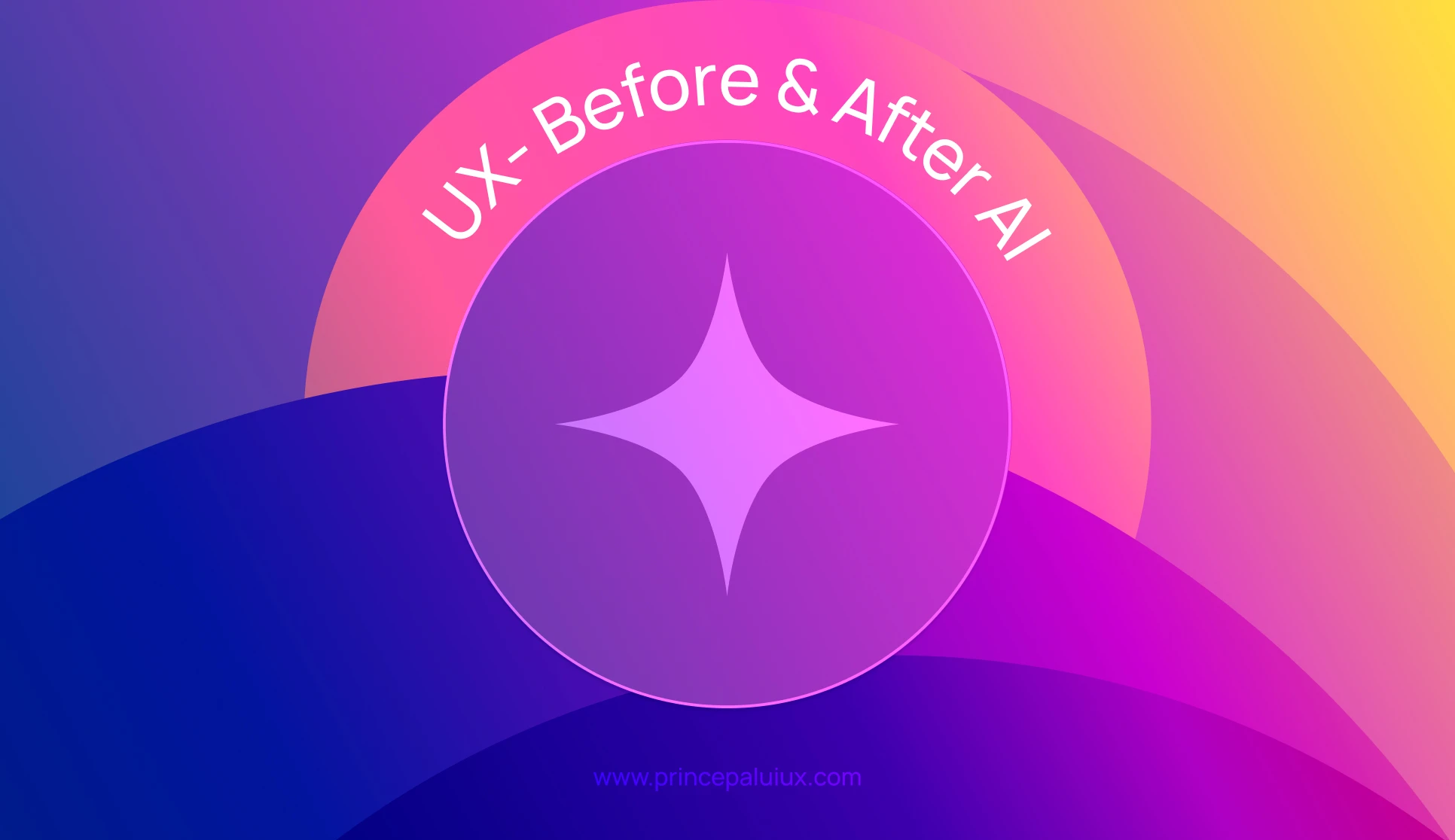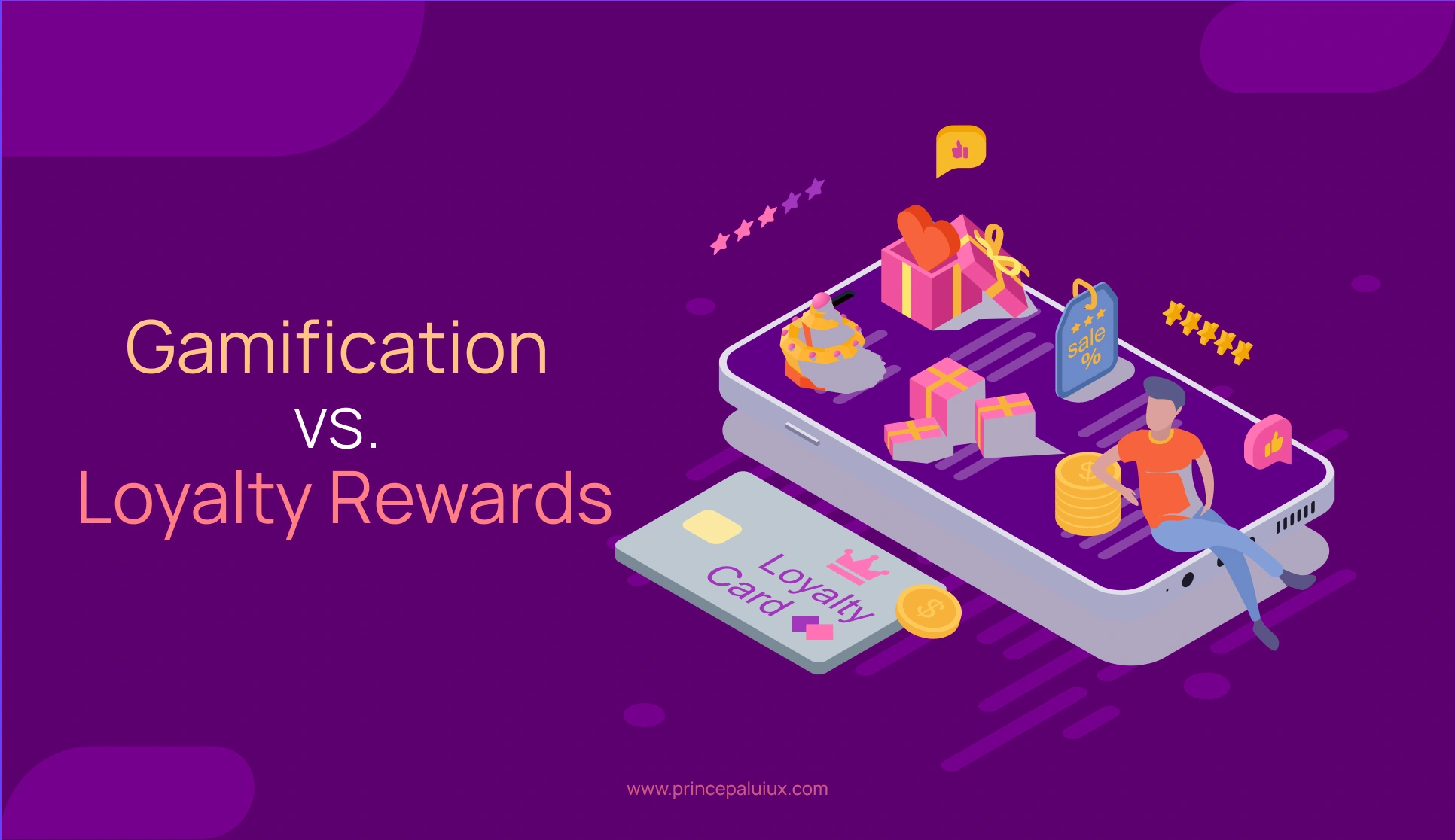Gamification isn’t just slapping points and badges onto your product—it’s about using psychology to motivate users in your SaaS product design. To do it right, you must understand gamification design frameworks.
Table of contents
🎯 What Is a Gamification Framework?
Think of a gamification framework like a recipe. It helps you understand what ingredients to use (points, badges, progress bars, etc.), why you’re using them, and how to mix them to motivate people.
It’s not about slapping a badge or a leaderboard on your product—it’s about designing meaningful experiences that tap into human psychology.
Designers and product people use a few popular frameworks.
Let’s walk through the best-known ones with plain English explanations and real-world SaaS examples.
🧠 1. Octalysis Framework – The Psychology Behind Motivation
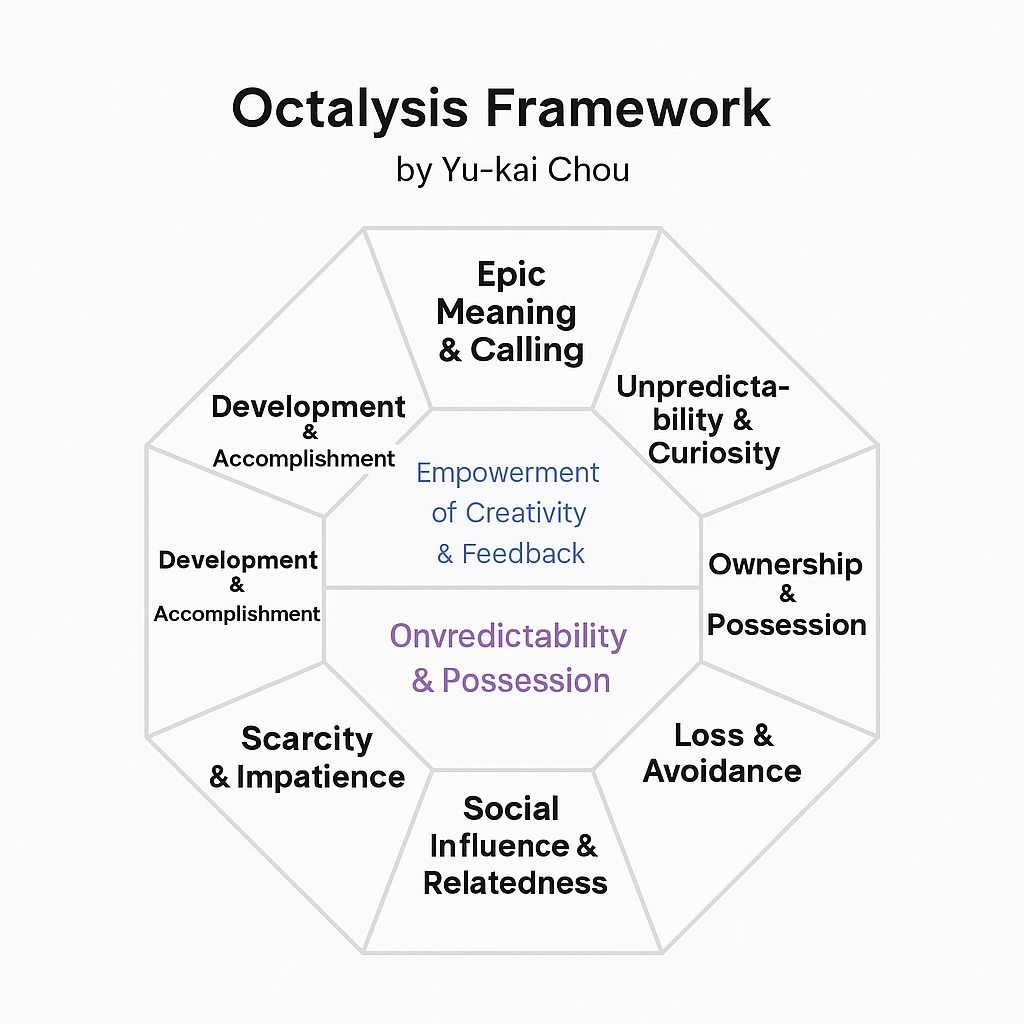
Created by Yu-kai Chou, this is probably the most detailed and widely used gamification model in B2B SaaS products.
It’s built around 8 Core Drives that explain why people do things—not just what they do. Each “drive” is like a psychological lever you can pull to get users to take action.
The 8 Core Drives:
- Epic Meaning & Calling
People want to be part of something bigger than themselves.
Example: Duolingo frames language learning as changing the world—one learner at a time. - Development & Accomplishment
People love growing, leveling up, and feeling a sense of achievement.
Example: Notion uses a clean onboarding checklist that celebrates progress. - Empowerment of Creativity & Feedback
Give users freedom to express themselves and get immediate feedback.
Example: Canva lets you create designs and instantly see results. - Ownership & Possession
If I own it, I care about it. If I built it, I’ll stick around.
Example: LinkedIn’s profile completion bar makes you feel like your profile is your project. - Social Influence & Relatedness
People are motivated by what others do—through competition, collaboration, or connection.
Example: Strava shows what your friends are up to. Suddenly, you want to go for a run. - Scarcity & Impatience
We want what we can’t have.
Example: Early-access invites or limited-time features (like Clubhouse used to do). - Unpredictability & Curiosity
The unknown is exciting. Think slot machines or surprise rewards.
Example: Duolingo sometimes gives you random gems or XP boosts just for showing up. - Loss & Avoidance
People don’t like losing progress.
Example: Streaks in fitness or learning apps keep you returning to avoid “breaking the chain.”
🧩 How to Use It:
Start by asking: “Which drives matter to my users?” Then, build features that tap into those motivations. You don’t need to use all 8—but the more you cover meaningfully, the better the experience.
When to Use It:
✅ Best for long-term engagement (SaaS, education, fitness apps).
✅ Helps diagnose why users lose interest (e.g., missing “Epic Meaning” in a tedious task app).
🔁 2. The SAPS Model – For Designing Rewards

SAPS stands for Status, Access, Power, and Stuff
It helps you consider what kind of rewards to give users in your gamified experience.
Let’s break it down:
- Status = Recognition, badges, leaderboards, exclusive roles
Example: GitHub’s top contributors get badges and exceptional visibility. - Access = Gated content, early features, special privileges
Example: Invite-only access to beta features in a SaaS platform. - Power = Control or influence over others or the system
Example: Admin privileges, the ability to moderate or to “boost” others. - Stuff = Real or virtual items (discounts, merch, coins, etc.)
Example: Redeem points for swag, virtual items, or gift cards.
📦 How to Use It:
Don’t just give users “stuff.” Think: what kind of value do they care about most? Sometimes, status or access is even more motivating than a discount.
🧭 3. Hook Model (by Nir Eyal) – Building Habits, Not Just Features
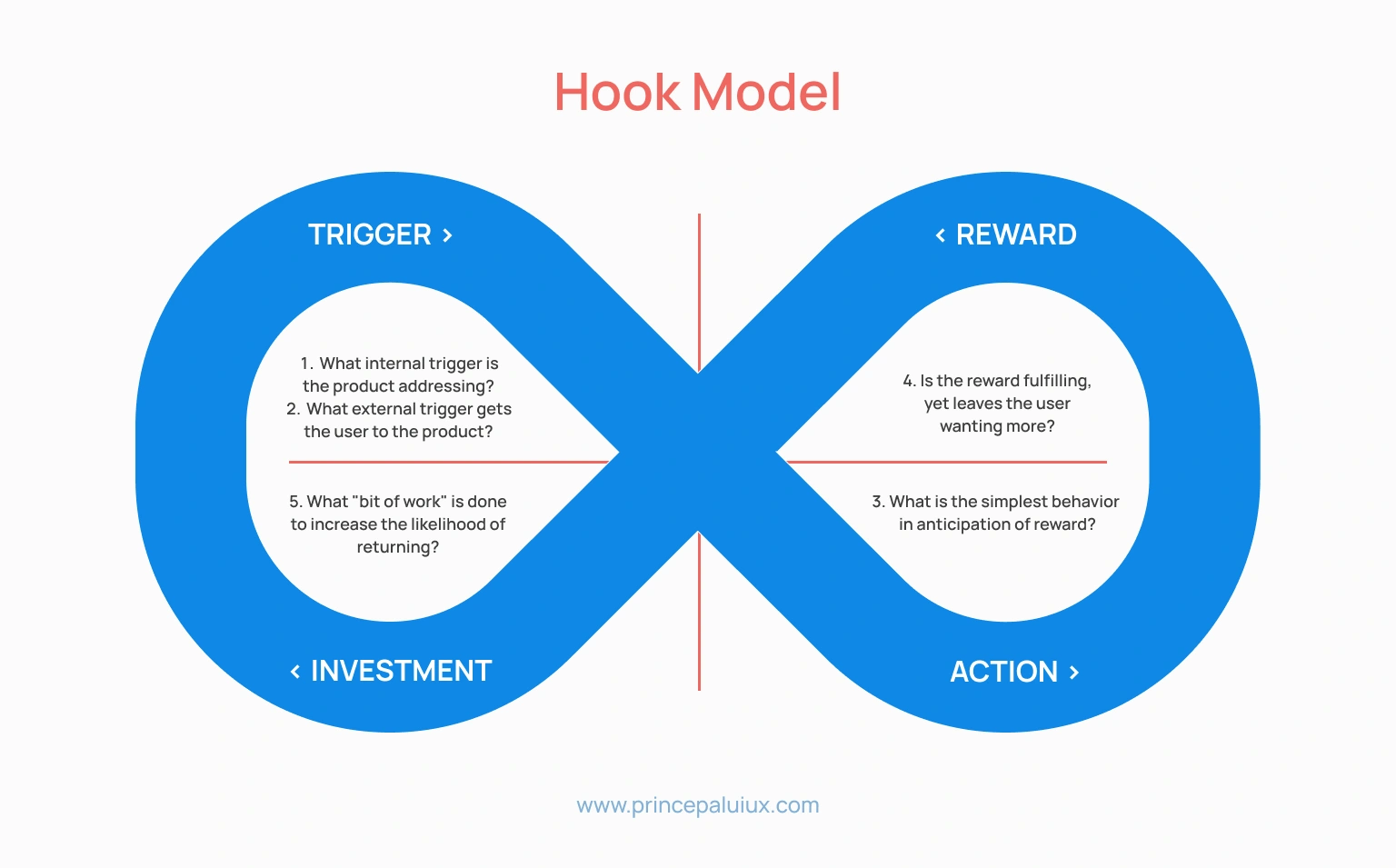
This model is all about turning occasional users into regular ones.
It’s a loop made up of 4 parts:
- Trigger – Something nudges the user into action (notification, email, etc.)
- Action – The most straightforward possible behavior in anticipation of a reward
Example: Click a button, scroll, and open the app. - Variable Reward – Something satisfying, surprising, or social
Example: Seeing a new comment, a stat, or a fun animation. - Investment – The user puts something into the product (time, content, data)
Example: Creating a task, uploading a doc, adding a teammate.
The idea is that every time a user goes through this loop, they become more invested in your product and are more likely to return.
🔄 How to Use It:
Map out this loop in your user journeys. Add subtle but meaningful hooks—especially around variable rewards and investment.
When to Use It:
✅ Best for habit-forming apps (social media, productivity tools).
✅ Avoid manipulative overuse (e.g., endless notifications).
🎮 4. What Is the MDA Framework?
The MDA Framework is a design model initially used in game development. It helps creators think about how a game or product feels and functions for users.

It’s split into three layers:
| Term | What It Means | Think Of It As… |
|---|---|---|
| Mechanics | The rules and systems | The building blocks |
| Dynamics | How those systems behave in real-time | The user’s interaction |
| Aesthetics | How it feels emotionally to the user | The experience or vibe |
Let’s dive deeper into each one 👇
🧱 4.1 Mechanics — “What are the rules?”
Mechanics are the essential elements of your product or game. You, as a builder, design them intentionally.
Examples of SaaS Gamification:
- Points
- Badges
- Progress bars
- Leaderboards
- Quests or challenges
- Levels or tiers
Consider these as your LEGO bricks — the components users will engage with.
🔄 4.2 Dynamics — “What happens when users interact?”
Dynamics are how the mechanics play out in real-time when users interact with them. You don’t fully control dynamics — users bring them to life.
Examples in SaaS:
- Users compete to be on the leaderboard
- They rush to complete daily challenges
- They collaborate in team quests
- They form habits from progress tracking
Here’s the key:
Mechanics = What you design
Dynamics = What users do with it
🎭 4.3 Aesthetics — “How does it make users feel?”
Aesthetics are the emotional responses and experiential value users get from the whole system. It’s the vibe and satisfaction they walk away with.

Possible Aesthetic Outcomes:
- Fun and excitement
- A sense of achievement or mastery
- Belonging or competition
- Curiosity and surprise
- Flow or productivity
In SaaS, this can be the feeling of “I’m getting better,” “This is fun,” or “I feel rewarded and recognized.”
🎯 Real SaaS Example
Let’s say you run a task management platform like Asana or ClickUp, and you gamify it.
| MDA Layer | Example |
|---|---|
| Mechanics | Add XP points for completing tasks |
| Dynamics | Users speed up task completion to earn more XP |
| Aesthetics | They feel accomplished, productive, and motivated |
🎨 Visual Summary
Here’s a simple visual analogy:
cssCopyEdit[ Mechanics ] —> [ Dynamics ] —> [ Aesthetics ]
Rules Real-time Use User Emotions
Tools Behaviors Experience
Systems Patterns Vibes
Why the MDA Framework Matters in SaaS
Using this framework helps product designers and founders:
- Understand how users will interact with gamified features
- Design for emotional value, not just functionality
- Align business goals with user motivation
It’s a powerful tool to go beyond just building features — and start creating meaningful experiences.
5. The RAMP Framework (Autonomy, Mastery, Purpose)
Based on intrinsic motivation, this one focuses on deep engagement (not just points).
4 Key Needs:
- Relatedness – Feeling connected (e.g., community features).
- Autonomy – Freedom to choose (e.g., customizable workflows).
- Mastery – Getting better over time (e.g., skill progressions).
- Purpose – Feeling your actions matter (e.g., eco-friendly apps).
Example:
- Notion’s templates (Autonomy) + skill-building docs (Mastery) + team collaboration (Relatedness).
When to Use It:
✅ Ideal for B2B SaaS, education, and wellness apps.
✅ Avoids shallow rewards (focuses on meaningful engagement).
🎮 So… Which Framework Should You Use?
Great question. Here’s a quick cheat sheet:
| Use Case | Best Framework |
|---|---|
| Understanding deep motivation | Octalysis |
| Planning reward types | SAPS |
| Creating addictive loops | Hook Model |
| Game or SaaS product feels | MDA |
| Deep engagement | RAMP |
In reality, most remarkable products use a blend. They borrow from psychology, game design, and behavioral economics to create an experience that feels natural—not gimmicky.
📰 Good reads about Gamification
🚀 Final Thoughts
Gamification works when it feels earned and purposeful. Don’t just add points and badges for its own sake. Instead:
- Understand what your users genuinely value
- Pick the proper framework(s)
- Layer in meaningful game mechanics
- Keep testing and evolving the experience
When done well, gamification turns dry user flows into delightful journeys—making your SaaS product usable and irresistible.
